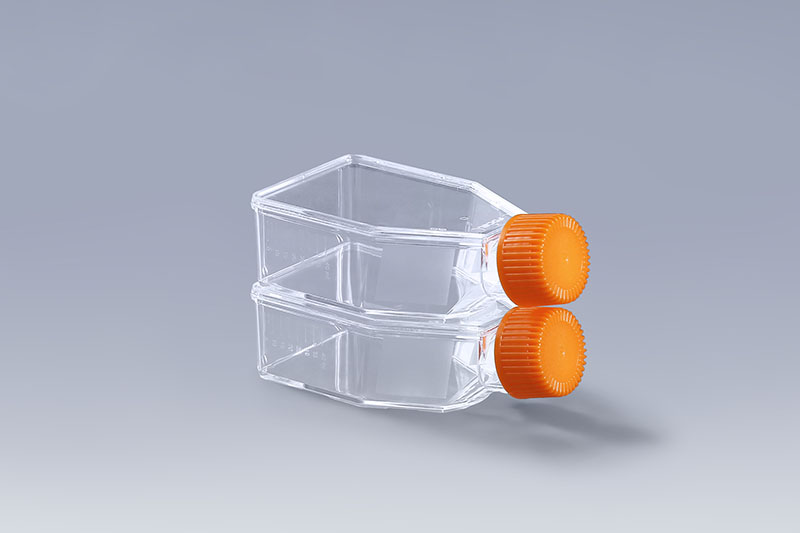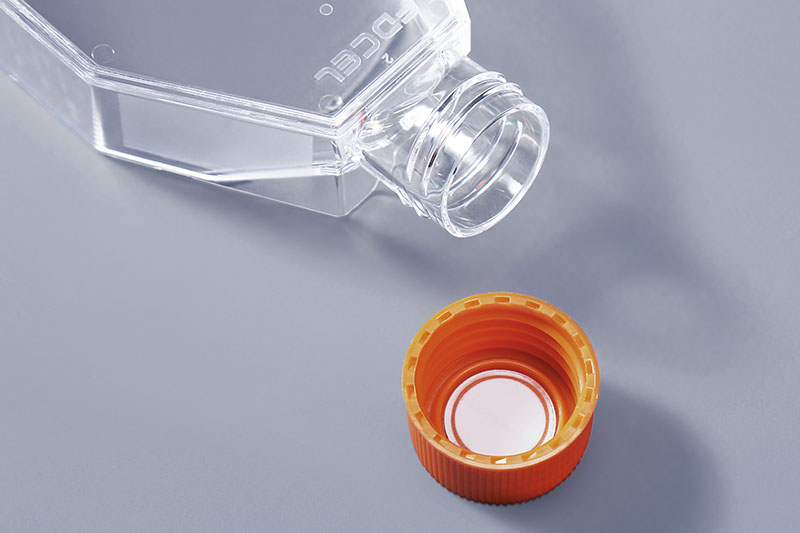Cell culture technology has been widely used in basic research, drug research and development, disease treatment, protein production and other fields. When culturing cells, cell culture flasks are a commonly used consumable. They are mainly used for the culture of adherent cells without TC treatment. The bottles can also be used for suspension cell culture. Can the type of medium in the cell culture flask be changed when culturing cells?
FuDau T25 Cell Culture Flasks
During the cell culture process, it is not recommended to change the medium when the cell proliferation and morphology are normal. The cells have various adaptive mediums. After changing the culture conditions, the cells may not be able to adapt quickly, resulting in cell death. If you must change, try switching sequentially, allowing cells to gradually adapt to the new medium, from 1:1 to 1:2 to 1:4 to 1:16, until the switch is complete. Be careful not to face the side with the growing cells when switching the medium, so as not to wash out the cells and affect their growth.
FuDau T75 Cell Culture Flasks
The above is an explanation on whether the medium in the cell culture flask can be replaced. During the operation, we must strictly abide by the aseptic operation specifications to avoid contamination of the cells.
The FAI climbed 5.9 percent year-on-year in the first 11 months of 2018, quickening from the 5.7-percent growth in Jan-Oct, the National Bureau of Statistics (NBS) said Friday in an online statement.
The key indicator of investment, dubbed a major growth driver, hit the bottom in August and has since started to rebound steadily.
In the face of emerging economic challenges home and abroad, China has stepped up efforts to stabilize investment, in particular rolling out measures to motivate private investors and channel funds into infrastructure.
Friday's data showed private investment, accounting for more than 60 percent of the total FAI, expanded by a brisk 8.7 percent.
NBS spokesperson Mao Shengyong said funds into weak economic links registered rapid increases as investment in environmental protection and agriculture jumped 42 percent and 12.5 percent respectively, much faster than the average.
In breakdown, investment in high-tech and equipment manufacturing remained vigorous with 16.1-percent and 11.6-percent increases respectively in the first 11 months. Infrastructure investment gained 3.7 percent, staying flat. Investment in property development rose 9.7 percent, also unchanged.
 English
English




















































